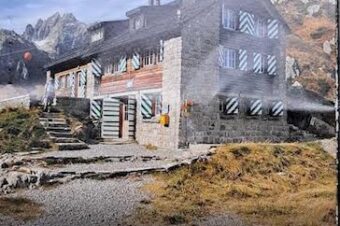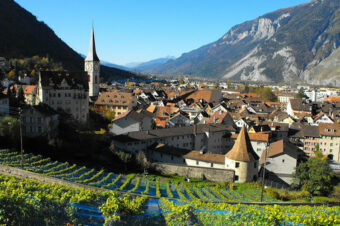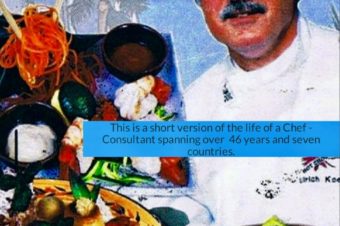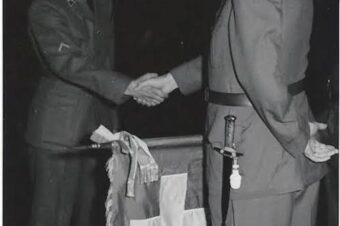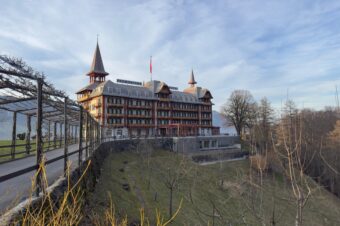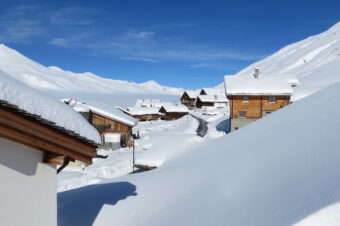This Blog's content
ToggleIn February 2022, the world watched in shock as Russian forces invaded Ukraine, a conflict that would not only reshape the future of Eastern Europe but also send shockwaves across the globe. What began as an aggressive military campaign by Russia has escalated into a war of survival for Ukraine, a test of Europe’s unity, and a flashpoint in the ongoing tensions between Russia and the West. More than a year and a half later, the war continues to devastate the lives of millions, displace families, and upend global markets.
The war in Ukraine is not just a regional conflict; it has become a defining moment for Europe and the world. It has exposed the fragility of international diplomacy, the limits of military intervention, and the far-reaching consequences of unchecked authoritarianism. As cities are leveled, economies are strained, and lives are lost, the question looms: what is at stake in this brutal conflict, and what does the future hold for Ukraine, Russia, and the wider international community?
No matter how much political analysis or military strategy we apply, the true cost of war is always measured in human lives. In Ukraine, this reality is tragically evident. More than 8 million people have been displaced, with millions fleeing to neighboring countries while others remain trapped in conflict zones, facing the daily horrors of bombings, artillery fire, and increasingly dire humanitarian conditions.
The toll on civilians is staggering. Cities like Mariupol, Bucha, and Kharkiv have been reduced to rubble, their populations caught in the crossfire. For Ukrainians, the war is not a far-off event; it is a brutal, daily reality. Thousands have lost their lives, including innocent men, women, and children who never wanted anything more than to live in peace.
But the toll extends far beyond Ukraine’s borders. As Europe absorbs refugees in unprecedented numbers, nations like Poland, Germany, and others have had to manage the logistical, financial, and emotional strain of welcoming those displaced. The refugee crisis has placed immense pressure on social services, housing, and employment markets—issues that have, at times, fueled social and political tensions.
Economically, the war has exacerbated food shortages, spiked energy prices, and sent inflation soaring. While Ukraine’s agricultural sector, once a breadbasket to the world, has been ravaged by the conflict, Europe faces not only a humanitarian crisis but an economic one as well. The economic hardship and the human displacement are a grim reminder that war’s impact is far-reaching, affecting not just the countries at war but the global community as a whole.
Ultimately, the real tragedy of this war is that the vast majority of those suffering have no stake in the political or territorial ambitions that have sparked it. They are ordinary people—families, children, workers—caught in the gears of a machine they cannot control. In many ways, the resilience and strength of the Ukrainian people, who continue to fight for their homes and their sovereignty, serve as both a testament to the human spirit and a heartbreaking reminder of the price of freedom in the face of aggression.
Geopolitical Implications for Europe
The war in Ukraine is, at its core, a battle for control and influence, but it’s also a conflict that has reshaped the geopolitical landscape of Europe. For decades, European countries have largely enjoyed peace and stability, with the EU and NATO serving as bulwarks against potential aggression. But the Russian invasion has shattered this illusion, reminding Europe—and the world—how fragile peace can be when powerful nations act outside the bounds of international law.
From the start, the war has tested the unity of European nations, as leaders grapple with difficult decisions about military support, economic sanctions, and diplomatic engagement. Countries like Poland and the Baltic states, which have long been wary of Russian expansionism, have been among the most vocal in supporting Ukraine. They’ve called for stronger sanctions, more military aid, and a tougher stance on Russia. Meanwhile, countries like Germany, once seen as the EU’s economic powerhouse and a leading voice for diplomacy, have faced internal divisions, balancing their economic ties with Russia with the moral and strategic imperative to stand with Ukraine.
The response from NATO has been pivotal. While NATO itself is not directly involved in combat, the alliance has provided significant military aid to Ukraine and reinforced its defenses in Eastern Europe. The war has highlighted the importance of NATO in maintaining European security, but it has also raised difficult questions about NATO’s future. How far should the alliance go in countering Russian aggression without provoking a wider war? As Ukraine seeks to strengthen its ties with the West, the question of NATO membership looms large, sparking intense debate about the potential risks and rewards of expanding the alliance.
The EU, too, has found itself at a crossroads. While many European countries have rallied around Ukraine, the war has exposed cracks in the EU’s solidarity. Countries like Hungary and Italy have been less enthusiastic in their support, driven by political and economic considerations. For the EU, the war has underscored the limits of diplomatic cohesion in the face of an existential crisis. But it has also pushed Europe to reconsider its security strategies, energy dependence on Russia, and long-term defense policies.
Perhaps the most profound shift has been in Europe’s approach to defense spending. For decades, many European nations relied heavily on NATO and the United States for security, often spending little on their militaries. The war in Ukraine has forced countries to reassess their military readiness and reinvest in defense. In the wake of Russia’s invasion, Germany, for instance, has committed to a major increase in military spending—a dramatic shift for a country historically cautious about militarization due to its post-World War II history.
In a sense, the war in Ukraine has catalyzed a new era for European security, one that is more wary of Russian aggression and more committed to strengthening the continent’s defense and unity. But it has also highlighted deep divisions within Europe, particularly between those countries that feel an urgent need to act and those who are more hesitant. The geopolitical ripple effects of this war will likely reverberate for years to come, shaping Europe’s future not just in terms of military strategy, but in its broader economic, political, and cultural outlook.
Russia’s Role and Motivations
To understand the ongoing war in Ukraine, it’s essential to consider Russia’s motivations, which are deeply rooted in history, politics, and the ambitions of its leadership. At the forefront of this conflict is Russian President Vladimir Putin, whose actions have been driven by a combination of personal, ideological, and geopolitical factors. For Putin, the war in Ukraine is not just about territorial control—it’s about Russia’s place on the global stage, its historical narrative, and its vision for the future.
Putin has long expressed disdain for the post-Cold War order, viewing NATO’s expansion and the EU’s growing influence in Eastern Europe as direct threats to Russia’s security and sovereignty.In his mind, the dissolution of the Soviet Union in 1991 was a catastrophe, and the loss of Ukraine—a country with deep cultural, historical, and strategic ties to Russia—was a blow to Russian power and prestige. For years, Russia has sought to reassert its influence over Ukraine, but the 2014 annexation of Crimea and the subsequent conflict in the Donbas region marked a dramatic shift, signaling Russia’s readiness to use military force to achieve its goals.
The 2022 invasion represents a culmination of years of strategic thinking by Putin and his inner circle. He views Ukraine’s tilt toward the West—its growing ties with NATO, and the EU, and its aspiration for greater sovereignty—as an existential threat to Russia’s sphere of influence. Ukraine’s integration into Western institutions would, in Putin’s view, not only weaken Russia’s geopolitical position but also embolden domestic opposition movements within Russia itself. A successful, democratic, and independent Ukraine could set a dangerous example for Russian citizens who might yearn for political freedoms and reform.
At a deeper level, the war is about Russian identity. For Putin and many in Russia’s political elite, Ukraine is considered an integral part of “Greater Russia,” a historical concept that views Ukrainians, Belarusians, and Russians as part of a shared cultural and ethnic heritage. This imperial mindset underpins Russia’s actions in Ukraine, making any Ukrainian desire for independence—or closer ties with the West—seem not just unacceptable, but an affront to Russia’s sense of self. The rhetoric used by Putin and his government frequently references Ukraine as a “brotherly nation” that has been “betrayed” by the West, casting Russia’s actions as a defense of Russian-speaking people and historical Russian lands.
The war has also been framed by the Russian government as a battle against what it describes as the “Nazification” of Ukraine, despite there being no credible evidence to support this claim. This narrative has been a key element in justifying the invasion to the Russian people, with state-controlled media casting the war as a moral crusade to protect ethnic Russians and “denazify” Ukraine. While this justification has been widely debunked internationally, it remains a central part of Russian domestic propaganda, playing to nationalist sentiment and deflecting attention from the true motivations behind the invasion.
Putin’s actions have created a paradox for Russia. On one hand, the war has revived a sense of nationalism and solidarity in some quarters, bolstering his domestic support. On the other hand, it has severely isolated Russia on the global stage, with sanctions, diplomatic sanctions, and the increasing burden of a prolonged military conflict. Russia’s economy, already strained by years of sanctions, has taken a significant hit. But even more damaging is the erosion of Russia’s international standing, with many countries viewing it as a pariah state that will be difficult to reintegrate into the global community.
As the war continues, Russia’s long-term strategy remains unclear. Will Putin’s government maintain its grip on power, or will the economic and military strains eventually lead to a shift in leadership? It’s also worth considering what a “victory” looks like for Russia. Is it the full occupation of Ukraine, or is it simply forcing the country to capitulate to Moscow’s demands? These questions remain unanswered, but what’s clear is that the war in Ukraine is a defining chapter in Russia’s history—and its relationship with Europe and the rest of the world.
The Global Impact: What’s at Stake
While the war in Ukraine may appear to be a regional conflict, its impact stretches far beyond the borders of Eastern Europe. From energy prices to global trade routes, the conflict is reshaping the world in profound ways, and the consequences of this war will be felt for years, if not decades, to come.
One of the most immediate and far-reaching effects of the war has been on global energy markets. Russia is one of the world’s largest producers of oil and natural gas, and its invasion of Ukraine has sent shockwaves through global energy supply chains. In response to Russia’s actions, Western nations have imposed sweeping sanctions on Russian energy exports, leading to shortages and soaring prices. European countries, particularly those heavily reliant on Russian gas, have been forced to scramble for alternative energy sources, accelerating efforts to shift to renewable energy but also pushing up the cost of heating and electricity for millions of people.
The energy crisis has compounded existing economic difficulties worldwide, including inflation, food shortages, and supply chain disruptions. Ukraine is a key exporter of grain, and the war has devastated its agricultural sector. With Ukrainian ports blockaded by Russian forces, global food prices have risen dramatically, threatening food security in regions already struggling with poverty and instability. Countries in North Africa, the Middle East, and parts of Asia that rely on Ukrainian grain have found themselves in desperate need of alternative sources of supply, leading to social unrest and heightened political instability in some regions.
On the diplomatic front, the war has highlighted the limitations of international institutions and the challenges of enforcing global norms. The United Nations, for example, has been largely ineffective in stopping the conflict, with Russia using its veto power as a permanent member of the Security Council to block any meaningful intervention. In the face of this, nations like the U.S. and those in the EU have taken a more unilateral approach, imposing sanctions and sending military aid to Ukraine. While these actions have been crucial in supporting Ukraine, they have also led to deeper divisions between Russia and the West, pushing the world further into a geopolitical standoff that echoes the Cold War.
In Asia, the war has intensified global concerns about the balance of power and security in the Pacific region. China, which has maintained a relatively neutral stance on the conflict, is closely watching the situation, as it grapples with its own ambitions in the South China Sea and its ongoing rivalry with the U.S. Some analysts have suggested that China may see the war as a test of the international community’s resolve and a signal of how the West might respond to any aggressive actions it might take in Asia, particularly concerning Taiwan. The outcome of the war in Ukraine could, in this sense, have far-reaching consequences for the future of global power dynamics.
Finally, the war has exposed the fragility of the global order and the challenge of maintaining peace in an increasingly multipolar world. The conflict is a reminder of how easily tensions can escalate, how fragile international institutions can be, and how interconnected our world is. The global economic system, already under strain from the COVID-19 pandemic, is now facing a prolonged crisis triggered by the war, affecting everything from trade to technology to financial markets.
For ordinary people around the world, the war in Ukraine has already made life harder. In the developing world, inflation has made essential goods more expensive, while in Europe, millions face the prospect of an energy crisis this winter. The ripple effects of the war are amplifying inequalities, deepening divisions, and contributing to a sense of global instability. And as the war drags on, the long-term costs of rebuilding Ukraine—both in terms of infrastructure and human capital—will place a heavy burden on the international community.
In many ways, the war in Ukraine is a wake-up call. It’s a reminder that the stability we take for granted is fragile and that the choices of a few powerful nations can have cascading effects around the world. As the conflict continues, the world will need to ask itself difficult questions about how to respond to aggression, how to support those in need, and how to ensure that future generations do not inherit the same legacy of conflict.
Possible Pathways to Peace (or Escalation)
As the war in Ukraine enters its second year, the question of how it will end remains one of the most urgent and uncertain issues facing the international community. The conflict has already cost tens of thousands of lives, displaced millions, and left much of Ukraine in ruins. And yet, despite the immense human suffering and economic upheaval, neither side appears willing to concede, and the path to a peaceful resolution seems as elusive as ever.
One of the key challenges in resolving the war is the starkly different objectives of the two sides. For Ukraine, this war is a fight for survival and territorial integrity. It seeks the full restoration of its pre-2014 borders, including Crimea, and a return to its path as a sovereign, independent nation with aspirations to join the EU and NATO. On the other side, Russia, under Putin’s leadership, is determined to assert its dominance over Ukraine, either through a forced surrender, the installation of a pro-Russian government, or some form of territorial division. Both countries’ national identity and future are tied to the outcome of this war.
Given these irreconcilable goals, a negotiated settlement remains incredibly difficult. Ukraine has made it clear that it will not negotiate with Russia unless Russia withdraws its forces entirely, and the Ukrainian people are adamant about preserving their territorial integrity. On the other hand, Russia has repeatedly stated that it will not back down, portraying the war as a defense of Russian-speaking populations in Ukraine and an effort to counter NATO’s encroachment on its borders. So far, there has been little room for compromise.
However, there are some potential pathways to peace, though each comes with its own set of obstacles and risks. One possible scenario is a ceasefire agreement brokered by international mediators. This would require both sides to agree to a temporary halt in hostilities, with the hope of creating space for further negotiations. But past ceasefires have been short-lived, often broken by both sides, and the stakes are much higher now. The longer the war continues, the more entrenched both sides become in their positions, making meaningful negotiations harder to achieve.
A second potential pathway is a more gradual diplomatic approach, where international pressure on Russia intensifies, particularly through economic sanctions and political isolation, while offering Ukraine continued support. Over time, the hope is that Russia will exhaust its resources and face domestic unrest, pushing Putin to the negotiating table. But this could take years, and there’s a real risk that Putin’s government might double down rather than back down, prolonging the conflict or escalating it further.
The most concerning possibility, of course, is that the war could escalate into a wider conflict, drawing in more countries and potentially even triggering a confrontation between Russia and NATO. While both sides have been careful not to engage in direct military conflict, the risk of miscalculation is ever-present. As long as Russia faces significant military setbacks or feels cornered, there’s always the danger of broader escalation, whether through cyberattacks, the use of unconventional weapons, or even direct military action against NATO forces in Ukraine or nearby countries.
For the international community, one of the biggest challenges is finding a way to pressure Russia into de-escalating without inadvertently sparking a larger war. The use of sanctions and diplomatic isolation has been effective in weakening Russia’s economy, but these measures also have unintended consequences for the global economy and could reinforce Putin’s narrative of Western aggression. Additionally, NATO’s continued support for Ukraine, including arms shipments and military training, raises the stakes of the conflict, making a Russian retreat seem like a loss of face for Putin.
At the same time, there is hope that the war could ultimately lead to a rethinking of global security arrangements. The conflict has made clear the need for stronger international institutions, greater diplomacy, and a reassessment of how the world addresses authoritarian aggression. While the outcome of the war remains uncertain, one silver lining could be that it forces the international community to confront long-standing security challenges and take a more proactive approach to preventing future conflicts.
Ultimately, the future of Ukraine—and the world—depends on the choices that both the Ukrainian government and Russia make in the coming months. The question is whether those choices will lead to a negotiated peace or whether the world will be forced to grapple with the consequences of a longer, more devastating conflict.
For now, the war in Ukraine remains a tragic reminder of how quickly the world can be plunged into chaos, and how fragile peace truly is. The global community must continue to push for diplomacy, while also preparing for the reality that, in some cases, the road to peace may be a long and uncertain one.
Trump’s Role in a Potential Peace Settlement
One possible scenario is that if Trump returns to power, his approach could shift the dynamic, especially in terms of diplomatic outreach. Trump has suggested in the past that he could quickly negotiate a peace deal with Russia—an idea that appeals to some who are tired of the prolonged conflict. However, such an outcome would raise questions about the conditions of such negotiations. Would Trump be willing to make significant concessions to Russia in exchange for a ceasefire? How would NATO and the EU respond to a U.S. pivot toward appeasing Russia?
Trump’s foreign policy legacy, particularly his ambivalence toward the NATO alliance and his praise of Putin’s leadership, has left many wary about the implications of a peace deal brokered under his leadership. While some argue that a deal with Russia might bring an end to the bloodshed, others fear that it could reward aggression and undermine the principles of international sovereignty and self-determination, particularly if Ukraine were forced to make territorial compromises.
Escalation or a New Cold War?
The most concerning possibility, of course, is that the war could escalate into a wider conflict, drawing in more countries and potentially even triggering a confrontation between Russia and NATO. While both sides have been careful not to engage in direct military conflict, the risk of miscalculation is ever-present. As long as Russia faces significant military setbacks or feels cornered, there’s always the danger of broader escalation, whether through cyberattacks, the use of unconventional weapons, or even direct military action against NATO forces in Ukraine or nearby countries.
If Trump were to embrace a more isolationist stance once again, stepping back from NATO and reducing U.S. support for Ukraine, it could embolden Russia to escalate its actions further, while NATO’s cohesion would be tested. Alternatively, a more confrontational U.S. stance, possibly under a future administration, could exacerbate tensions, dragging the world closer to a new Cold War.
The Trump Factor: A Shift in U.S. Foreign Policy?
While the Biden administration has made clear its commitment to standing with Ukraine and supporting European security, former President Donald Trump’s foreign policy legacy—and his possible return to power—adds a layer of uncertainty to the global landscape. Trump’s “America First” approach, which emphasized skepticism toward international alliances like NATO and a tendency to downplay Russia’s role in global affairs, marked a stark departure from the policies of previous U.S. presidents. Under his administration, the U.S. was often at odds with its NATO allies, and Trump himself made a series of comments that appeared to align more closely with Russian interests, including praising President Putin and questioning NATO’s relevance.
If Trump were to return to office, there is speculation about how he might approach the Ukraine crisis. Would he seek to broker a peace deal with Russia, potentially lifting sanctions and easing tensions in exchange for strategic concessions, as some of his rhetoric during his presidency suggested? Or would his “America First” philosophy result in the U.S. stepping back from its role as the leader of the Western alliance, allowing Russia to assert more control over Ukraine and its neighbors? Either scenario would mark a significant departure from the current trajectory, adding another layer of complexity to the geopolitical landscape and potentially affecting future pathways to peace.
Stay safe and well!
Your Blogging Friend Ulrich
